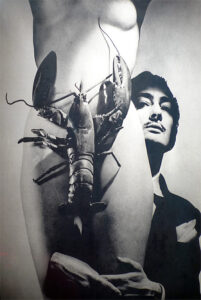Different facets to explore for Subject matter
The main focus on this project will be about food in relation to the city. How we, as a society, consumers and individuals can change the process and intrinsic value of food. Thereby creating a dynamic value in what we eat.
Finding the lobster
The History
Like most other animal products, the price is determined by the supply and demand of the animal. However, lobster prices often have an artificial government pricing, where it can impose an increase on a year by year basis. This, of course, has led to a social conation of lobster to be for the rich and bourgeoisie. Nonetheless, it was only relatively recently when lobsters had a completely different value and connotation. Lobsters were abundant by the coast and were mostly fed on by people who were poor, servants or prisoners. Some reasons as to why the lobster was seen as such are how its form was unfamiliar, seen as an ocean bottom feeder and vaguely resembles an insect. The sudden change of value came about at the same time as the advancement of the railway system in the United States. Shifty train managers recognised that if inland passengers never knew what a lobster was, they could serve it to them as exotic creatures whilst maintaining an overall low cost. Passengers on the train began to adore the lobster and started to request it outside of trains. There were other large cultural and economic events that affected the price of lobster but by the 1950s, lobsters were firmly considered a delicacy.
I find the history behind the lobster to be very intriguing, especially considering how one main reason for its growth coincided with the expansion of railways. There is something really frustrating and hypocritical about how food’s value and social status changes over time. Especially when it is entwined and ingrained into the rise of capitalism and making a quick buck
Aphrodisiac Interpretation

https://panathinaeos.wordpress.com/tag/salvador-dali/?iframe=true&preview=true/feed/
In most art practices I think it is really important to keep in mind the possibility of multiple interpretations a viewer might have. It is undeniable that a common interpretation of the lobster is as an aphrodisiac. As put by Nancy Frazier in I, Lobster: A Crustacean Odyssey 2012:
"“The taste of lobster is the taste of ocean depths, but there is a mysterious sweetness added to the salty broth. Along with more familiar love potions like caviar and oysters, lobster has a reputation as an aphrodisiac."
(https://panathinaeos.wordpress.com/tag/salvador-dali/?iframe=true&preview=true/feed/)



Leave a Reply